Content
-
1 Facade insulation options
- 1.1 Outdoor
- 1.2 Internal
- 1.3 Inside the wall
-
2 Types of material for facade insulation
- 2.1 Glass wool
- 2.2 Basalt wool
- 2.3 Styrofoam
- 2.4 Extruded polystyrene foam
- 2.5 Mineral wool
- 2.6 Plaster
- 2.7 Thermopanels
- 3 Installation of a double frame
- 4 What material to choose and how is it better
- 5 Video
- 6 Photo of the insulation of the building facade
Insufficient insulation of house structures leads to increased costs associated with payment for heating. Therefore, preparing for the winter, many owners of apartments and houses are wondering how to insulate the facade the better it is.
Facade insulation options
The modern construction market presents a wide range of all kinds of materials intended for insulation of the facade walls. Before starting work on insulation, it is necessary to decide which option of insulation to choose for your home. There are three such options:
- insulation of the walls of a wooden, panel or brick house from the outside;
- insulation inside the house;
- laying of insulating material inside the walls.



Outdoor
Insulation of the facade of the house with modern materials from the outside allows not only to keep heat indoors, but also completely transform the appearance of the house. In addition, thermal insulation materials help to solve a number of other problems:
- increase the service life of the walls due to the additional layer protecting them from the effects of rain, snow and other external factors;
- lack of drafts and maintaining a stable temperature inside the building;
- solution to the problem of sealing joints in panel buildings;
- improvement of sound insulation.
External insulation of facades can be performed in the following ways:
- plastering method (wet facade);
- use of heavy plastering systems;
- ventilated hinged facades;
- siding.



External insulation has such disadvantages as the impossibility of installing heat-insulating materials on its own in multi-storey buildings, as well as the problem of point insulation. Under point insulation is understood as insulation not of the entire building, but only of one or several apartments. Currently, this practice is very common. However, you should know that the point insulation of the facade of apartment buildings contributes to the active destruction of capital walls at the joints of insulated and non-insulated surfaces. Destruction occurs due to the difference in temperature of condensation of moisture and the wall. In some buildings (for example, which have historical value), it is prohibited to perform work such as external thermal insulation of the facade.
Internal
Internal insulation of the facades of apartment buildings is used much less frequently than external insulation due to the large number of drawbacks of indoor insulation. These disadvantages include:
- reduction of the room area due to heat-insulating materials;
- the need for equipment of rooms with additional ventilation;
- the possibility of condensation on the heat insulator, which can lead to rapid destruction of the insulation;
- faster room cooling;
- If the insulation is not installed correctly, mold may form on the walls over time.
Walls insulated indoors, in severe frosts, freeze through from the outside, since the heat-insulating layer does not allow the outside to heat up. This leads to the formation of condensation between the wall and the heat insulator. Condensate, freezing, destroys the adhesive that holds the insulation material, and with the advent of heat, the walls are covered with a layer of mold and fungus. Such troubles can be avoided with the help of high-quality vapor barrier with careful sealing of all joints, as well as the organization of forced ventilation of a mechanical type.
The advantages of internal insulation include the possibility of self-assembly and quick heating of the room.
Inside the wall
In Russia, wall insulation using three-layer masonry began to be practiced in the last century. Then sawdust, slag or peat could be used as a filler. Currently, such ancestral methods have been replaced by modern heat-insulating materials.
Almost any type of material can be used as a filler between the supporting and external walls: basalt cotton wool, polystyrene foam, polystyrene foam and others. In this case, the inner side is laid out with foam concrete, cinder block, gas silicate, or expanded clay block. As a cladding, plastering, silicate or red brick can be used. The disadvantages of multilayer facade systems include the accumulation of condensate moisture between the layers.

Types of material for facade insulation
When choosing a material for warming the facade of a house, the following points must be considered:
- how many floors in the insulated building;
- in which climatic zone is the house located;
- material used to build a house.
So, in frame and wooden houses you can not use the same insulation for the facade. In frame houses, polystyrene, glass wool, penoizol, mineral wool boards are used, and for warming wooden houses - ordinary tow, linen felt or jute.
All heaters for building facades are divided into organic and inorganic. Organic include: wood, cork, rubber, cellulose fiber, moss, tow, felt, jute. Inorganic materials include glass wool, polyurethane foam, polystyrene foam, penoizol, liquid ceramics.
How to insulate the facade of the house, while choosing the right material? To make the right choice, you need to know what differences exist between different types of materials, and navigate their advantages and disadvantages.





Glass wool
Glass wool is one of the most common materials used to insulate the facade. It is placed between the brickwork of the brick house outside and the plasterboard structure inside. Vapor barrier, as a rule, is not used when laying glass wool, so the time it takes to work with it is significantly reduced compared to installing other materials. Glass wool has a low cost, so the cost of insulation with this material will be minimal. However, the effect of glass wool insulation may not be good enough.
Experienced experts do not recommend using ordinary glass wool in rolls, since it has too low a coefficient of thermal resistance.
Proponents of this material love it because it “breathes”, but it should be remembered that it is this quality that makes glass wool unsuitable for internal thermal insulation. Wool fibers allow moisture to freely approach the dew point, and because of the high adsorbing properties, the absorption of all available moisture by the cotton occurs.
If you decide to use glass wool to insulate the facade of the building, you must choose special types of cotton wool, which in their characteristics resemble foamed polystyrene foam. But unfortunately, even the most modern glass wool, which has minimal water-absorbing properties, cannot give a 100% guarantee of dryness.


Basalt wool
Basalt (stone) wool contains fibers of basaltic rocks. This material has good sound and thermal insulation properties. The cost of basalt wool significantly exceeds the cost of glass wool. This material also has a larger volume and higher strength than glass wool.
Basalt cotton wool absorbs moisture much less than glass wool, therefore, it is often used to warm the facade of a brick house, or panel houses. In addition, even with significant wetting, basalt wool does not shrink. This property allows you to use it as a heater for plaster. Among the main disadvantages of basalt wool is the difficulty of installation, since during installation this material breaks down, forming a large amount of dust in the air.
Dust generated when breaking basalt wool causes itching of the skin. And when dust particles enter the respiratory tract, they settle in the lungs of a person, and remain there forever. Therefore, it is highly undesirable to use this heat-insulating material for wall sheathing inside the house. If such a need nevertheless arose, then basalt cotton wool must be covered with a vapor barrier and hermetic casing.


Styrofoam
For the manufacture of polystyrene, polystyrene is heated to high temperatures, and then foamed using a special technology. This material does not allow air, noise, water and heat to pass through, it is very easy to work with, and in addition, it has a very low weight.
Polyfoam is not affected by fungi, bacteria, mold, as well as adverse weather conditions. One 8 cm thick foam plate can replace more than one and a half meters of a brick wall, about 25 cm of a wooden wall, and 9 cm of mineral wool. All these properties make polystyrene foam (polystyrene) one of the best materials. Therefore, when the question arises, what kind of insulation to choose for the facade, it is worth paying attention to the foam.
Among other things, polystyrene foam has a sufficiently high strength, so it does not sag over time. The cost of polystyrene is relatively low, due to which most people today mount this material on the facade.
The disadvantage of polystyrene compared with mineral wool is its high degree of ignition. However, stucco on foam insulation can solve the fire hazard problem.
Another insignificant disadvantage of this material is the need for labor-intensive finishing work. Such problems arise in those cases when the mesh necessary to hold the plaster layer is laid over foam boards. After finishing the plastering work, the plastered facade requires painting, and in some cases, skinning. Painting performs not only an aesthetic function, but also protects the walls of the house from rain and snow.


Extruded polystyrene foam
To make this material, polystyrene granules are melted at high temperatures and then foamed. Thanks to the special production technology, extruded polystyrene foam has even higher strength, durability, water and air tightness than conventional polystyrene foam. The material can be used both on wooden surfaces and for warming a brick house outside or inside.

Mineral wool
The main feature of mineral wool is its ability to retain heat inside and not let cold pass inside. Thermal insulation of the facades with this material is carried out by wrapping the entire area of the house with mineral wool plates. This method of thermal insulation is used for both wooden and brick houses.
The main advantages of mineral wool:
- resistance to fire;
- low thermal conductivity;
- resistance to biological negatives.

Plaster
Thermal insulation using plastering refers to the wet type of facades. A wet facade is considered one of the most economical and common ways of warming houses. This method can be applied both internally and externally.
Thermal insulation using plastering is carried out using mineral wool and polymer plates. The surface of the insulating material is covered with a thin layer of plaster. It should be borne in mind that when choosing stucco compositions, special attention should be paid to their degree of permeability.
Painting of plastered surfaces can be done with acrylatex based paint or based on silicone resins. Painting of internal and external walls should be carried out only with paints intended for this.
For fastening lightweight plaster systems, polymer-cement glue and fasteners are used, and for fastening heavy structures, reinforcing mesh, as well as dowels and anchors are used. The grid should be selected in accordance with the thickness of the plaster and the number of storeys of the house.


Thermopanels
Thermal panels consist of polyurethane foam insulation and a facing layer that performs a decorative and protective function. The lining of the insulated thermal panel is made of clinker tiles, which is available in a wide range of colors. Such a warm facade does not require additional finishing work, such as, for example, painting or plastering.
Another feature of thermal panels is their diffusion openness, inertness and strength. Due to these qualities, the insulating material does not require equipping with ventilated gaps on the rear side of the facade, and does not collapse due to condensate.
The fastening of the insulation is carried out using profiles, as a result, a self-supporting structure is obtained without a load on it from above. The simplicity of installation and the “lack of whims” of the material make it possible to restore old facades made of concrete, brick, timber, plastered or unplastered facade.


Installation of a double frame
Those who have not yet decided how to insulate the facade from the outside should pay attention to the double ventilated frames. The double frame is a hinged structure used to prevent condensation from accumulating inside the structure. These facades include thermal panels, as well as polystyrene and polystyrene materials, for the fastening of which profiles are used. Basalt cotton wool is also often used as insulation for a ventilated facade.
The frame insulation for the ventilation façade is a heat-insulating panel protected by a facing plate. A metal substructure is used to fasten the cladding plate, and plate-shaped dowels are used to fasten the heat-insulating panel. Thus, a ventilated layer is created for the insulation, preventing the accumulation of moisture.

What material to choose and how is it better
So, what is better to insulate the facade? All the various options for insulation differ from each other in their characteristics. This is the complexity of the installation, and the cost, and the material of the insulation. Therefore, the choice of thermal insulation may depend on such factors as material capabilities, climatic zone, material from which the house is built.
One of the most important conditions for internal thermal insulation is environmental safety, and when choosing material for insulation of external walls should pay attention to resistance to external influences Wednesday.
If the installation of thermal insulation is carried out independently, then an important criterion in answering the question of how to insulate the facade of a house outside will be the quality of work. Failure to comply with the process can lead to fungal deposits or shrinkage even when the best insulation has been chosen.
Video
The video shows how to insulate the facade of the building yourself.
Photo of the insulation of the building facade
A selection of photos about the insulation of building facades.










-
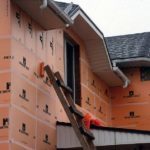 The technology of facade insulation with foam
The technology of facade insulation with foam
-
 How to make warm glazing without changing the facade
How to make warm glazing without changing the facade
-
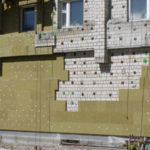 Technology of insulation of facades of mineral wool
Technology of insulation of facades of mineral wool
-
 How to assemble a thermal insulation pie for a boardwalk
How to assemble a thermal insulation pie for a boardwalk
-
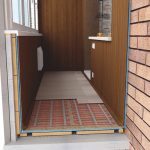 How to insulate a loggia and not break the law
How to insulate a loggia and not break the law
-
 Why do they regret after insulating the walls from the inside
Why do they regret after insulating the walls from the inside
-
 Is insulation at home effective outside
Is insulation at home effective outside
-
 The main mistakes in home insulation
The main mistakes in home insulation
-
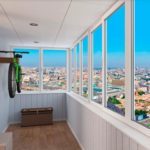 Warming of a balcony: in what cases will it be useless?
Warming of a balcony: in what cases will it be useless?
-
 How not to waste money by warming the loggia
How not to waste money by warming the loggia
-
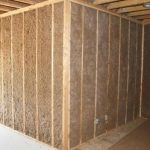 Frequent mistakes when warming a house, places where cold seeps
Frequent mistakes when warming a house, places where cold seeps
-
 Why is the best option for insulating the ceiling in the house is from the attic
Why is the best option for insulating the ceiling in the house is from the attic
New publications are published daily on our channel in Yandex. Zen
Go to Yandex. Zen





